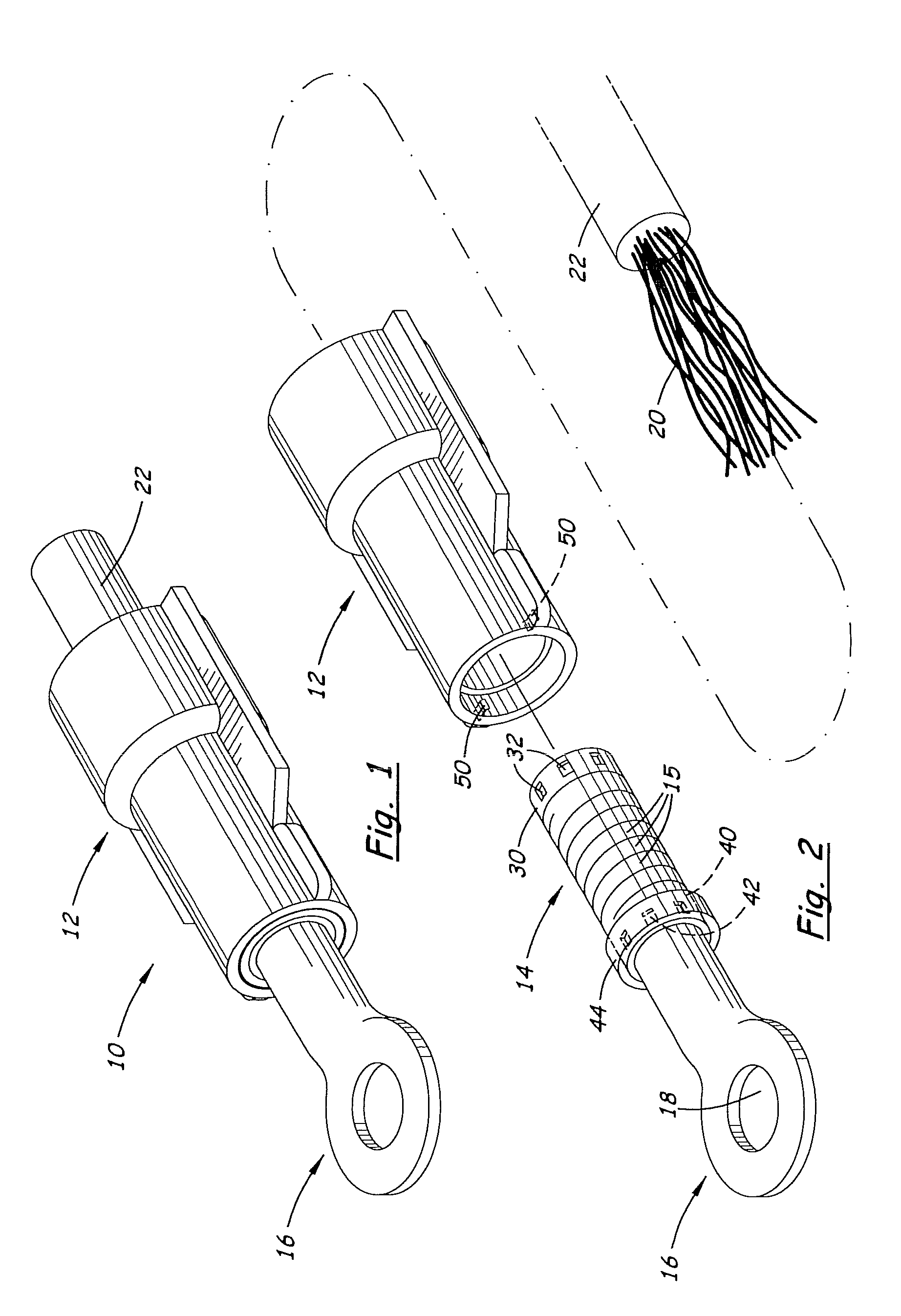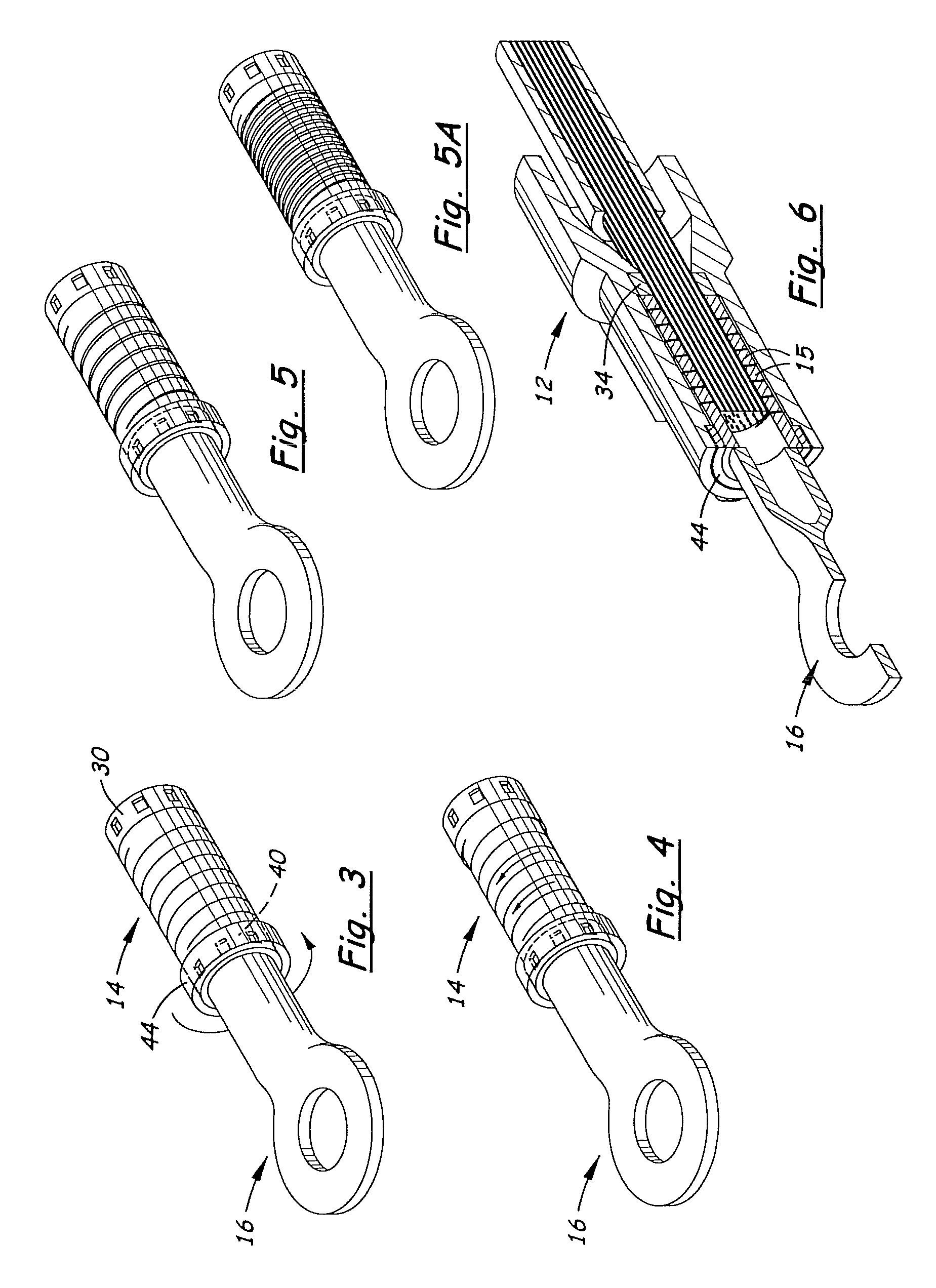Electrical connectors and methods of manufacturing and using same
a technology of electrical connectors and connectors, which is applied in the direction of coupling device connections, conductor screwing into other, multi-conductor cable end pieces, etc., can solve the problems of reducing the integrity and effectiveness of crimp-connection devices, not always easy to determine quality and permanence, and the failure of prior art crimp-connection devices. to achieve reliable and secure electrical connection
- Summary
- Abstract
- Description
- Claims
- Application Information
AI Technical Summary
Benefits of technology
Problems solved by technology
Method used
Image
Examples
Embodiment Construction
[0069]Referring to the Figures, there are shown several, but not the only, embodiments of the invented spiral electrical connectors. The invented connectors allow one or more stripped, electrically-conductive wires / cables / elements to be connected to other un-insulated, conductive wires / cables / elements. One may note that the term “conductive” is used in this Description and in the Claims for simplicity, and is understood to mean electrically-conductive. The invented connectors may be used with wire, cable, and other elongated conducting material, but the term “wire” is used herein for simplicity and includes single-strand, multiple-strand (including those that are braided, twisted, woven and / or otherwise grouped) wires and conducting material having at least a portion that is elongated for being inserted into the connector. The preferred embodiments are particularly beneficial in connecting multiple stripped, conductive strands (also called “filaments”) to each other or to another co...
PUM
 Login to View More
Login to View More Abstract
Description
Claims
Application Information
 Login to View More
Login to View More - R&D
- Intellectual Property
- Life Sciences
- Materials
- Tech Scout
- Unparalleled Data Quality
- Higher Quality Content
- 60% Fewer Hallucinations
Browse by: Latest US Patents, China's latest patents, Technical Efficacy Thesaurus, Application Domain, Technology Topic, Popular Technical Reports.
© 2025 PatSnap. All rights reserved.Legal|Privacy policy|Modern Slavery Act Transparency Statement|Sitemap|About US| Contact US: help@patsnap.com



